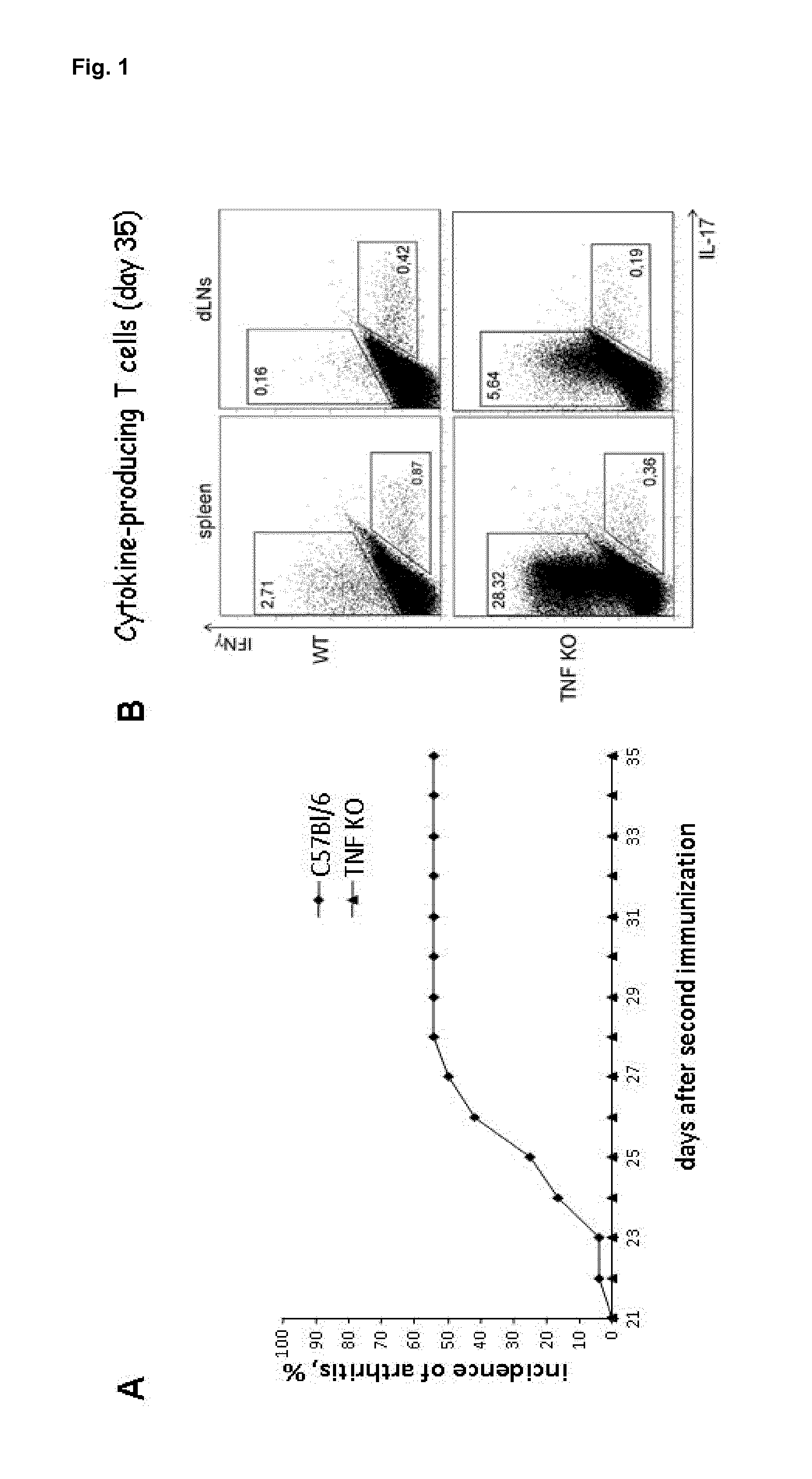Bi-specific affinity reagents for cell-lineage-specific tnf-alpha neutralisation
a tnf-alpha, cell-lineage-specific technology, applied in the direction of fused cells, drug compositions, immunological disorders, etc., can solve the problems of tnf inhibition putting patients at increased risk of opportunistic infections, uncurative treatment, and inability to cure. , to achieve the effect of prolonging the in vivo half-life, good specificity and binding, and good stability
- Summary
- Abstract
- Description
- Claims
- Application Information
AI Technical Summary
Benefits of technology
Problems solved by technology
Method used
Image
Examples
examples
[0132]The examples provided herein represent practical support for particular embodiments of the invention and are not intended to limit the scope of the invention. The examples are to be considered as providing a further description of possible and potentially preferred embodiments that demonstrate the relevant technical working of one or more non-limiting embodiments.
[0133]The invention utilises a CIA model to show that pathogenic and protective TNF are produced by distinct subsets of cells using a unique panel of mice lacking TNF production by specific cell types (for example T cells, B cells or macrophages).
[0134]The invention further relates to novel reagents for neutralising human TNF, and because the disease models are in mice, mice “humanized” for the TNF system have been used. The most advanced and convenient is the ‘knock-in’ mouse in which case the human TNF gene with all its regulatory elements has been placed into exact position of its murine counterpart. These mice are...
PUM
| Property | Measurement | Unit |
|---|---|---|
| Fraction | aaaaa | aaaaa |
| Fraction | aaaaa | aaaaa |
| Fraction | aaaaa | aaaaa |
Abstract
Description
Claims
Application Information
 Login to View More
Login to View More - R&D
- Intellectual Property
- Life Sciences
- Materials
- Tech Scout
- Unparalleled Data Quality
- Higher Quality Content
- 60% Fewer Hallucinations
Browse by: Latest US Patents, China's latest patents, Technical Efficacy Thesaurus, Application Domain, Technology Topic, Popular Technical Reports.
© 2025 PatSnap. All rights reserved.Legal|Privacy policy|Modern Slavery Act Transparency Statement|Sitemap|About US| Contact US: help@patsnap.com



